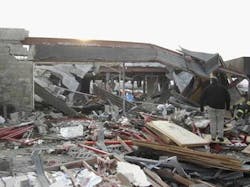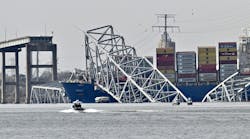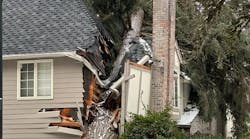This month, we finish our discussion regarding building collapse by focusing on the operational concerns that come with every incident. We will discuss the potential for a large-scale collapse event in your own community, some tactical and strategic considerations for the collapse response, and define the phases of collapse rescue, and how they bring the incident to a successful conclusion.
In developing the specific collapse response needs of your community, the best starting point is with an operational capability check. Specifically, what type of incidents are your resources capable of handling with local support? Your in-house capabilities should be categorized by the following levels:
Awareness: Minimum abilities for assessment and requesting resources, surface-victim removal, content removal, etc…
Operations: Minimum level to operate in most unreinforced masonry (URM) constructed structures, conduct entry and removal operations, some limited shoring
Technician: All above mentioned skills, with capabilities to operate in concrete/steel/ reinforced frame structures.
Along with personnel, resources and personal protective equipment (PPE0 will be needed to adequately protect the rescuers. While turnouts provide some protection during the collapse response, they can become bulky and cumbersome during the operational period. Many departments have instead outfitted their rescue companies with lightweight USAR turnouts or Nomex coveralls for such a response. At a minimum, personnel should be outfitted with helmets, work gloves, eye protection, dust masks and half-face respirator masks, body substance isolation (BSI) equipment, hearing protection, flashlights, steel-toe boots with ankle support, knee and elbow pads, radios, and atmospheric-monitoring equipment. Most importantly, when your department makes the investment in this equipment, be sure the policy for enforcing its usage is in place.
Most departments have resource lists that are available for handling single-point responses that are dealt with on the local level, but multiple-point responses are a different story. Multiple-point responses are spread out over a larger area, involving many locations, and will require a larger resource pool, including outside agency support, large-scale Incident Management support, and technical expertise. An inventory of the surrounding communities can help identify critical resources such as mutual-aid companies, engineers, logistical support, and state or local experts for response. This review should be done annually, in order to keep the operational plan updated and accurate. Sunday morning, at 2 a.m. is not the time to start shopping around for a crane to respond to the scene; do your homework before the incident.
The collapse scene is not the place for freelancing and separation of crew members. Things can go wrong in an instant, and injuries and fatalities are often the result. It is vital that all of the responders understand that scene safety is an integrated part of training and discipline. Personnel must foster an attitude that identifies their skills and limitations, and embraces the “Team Efficiency Concept.” In his book, “Engineering Practical Rope Rescue Systems” (2000), Mike Brown defines the Team Efficiency Concept as “refining team member interaction to be productive without waste in every team endeavor” (Brown, 2000, p. 36). This concept enforces the maximization of the member’s efficiency, while considering safe operations as of equal importance. Working as a team for safer operations, staying focused on the assigned task, bringing the right equipment initially during the response are all examples of team efficiency. Your “team” should strive to coordinate, train and respond together with other local resources in a professional and commonly acceptable fashion.
Let’s take a look at the actual response to the incident. We can identify five phases of the collapse operation at any given incident:
Reconnaissance: This phase is one of, if not the most important phase of the operation. This will set the pace for the rest of the incident. This phase involves finding out what happened that led to the collapse, including a six-sided approach (front, rear, both sides, top and bottom) and it can include:
1. Nature of the event (terrorism, structural failure, gas leak, tornado, etc…)
2. Type of construction type and materials used
3. Use of the building (occupancy)
4. A rough estimate of potential victims (this will vary, depending on occupancy)
5. Potential additional hazards
6. Incident Scene Control
7. Identifying potential survival locations
8. Utility Control (Local control at first, but start the utility company representatives responding in)
9. Fire concern – did the fire cause the collapse, or was it secondary to the collapse? Either way, suppression is a constant responsibility and concern at the incident
10. Develop the formal Incident Action Plan (IAP)
11. Initiate the Emergency Response Plan (ERP)
At this phase, responders are converging onto the scene. Unfortunately, responses like this result in resources self-dispatching themselves to the incident. It is imperative that all personnel on-scene are identified, accounted for, and properly assigned based on the priorities of the incident. The ERP should have already identified who is responding, now all that needs to be done is to assign them. Before being deployed, the crews attend a scene-safety briefing that should include the following:
Lookouts. These are safety officers whose critical functions include identifying potentially dangerous conditions and how to mitigate these issues.
Communications: The formal plan, including what channels each division or group will be operating on. There should also be an agreed-upon method of evacuation, and make sure everybody knows it.
Escape Routes: A pre-established path to an area of safety is chosen prior to entering. Make note that the safest exit may not always be the fastest, but it is still the safest. Considering scene dynamics, this route may change as conditions do.
Safe Havens: Identify an area of safety immediately. This could be within the “hot zone” and needs to be passed on to everyone working in the area, especially during changes at the end of operational periods.
Surface-Area Rescue: Initial responders may be faced with multiple victims at the surface and they may be incapacitated, walking wounded, lightly entrapped, or fatally injured. The removal of these victims will take priority, but further evaluation of the pile, along with searching for possible victim locations, should be going on at the same time. This will help identify areas from which to start the search. Appropriate resources can be deployed from there.
Void Search: Personnel will be checking areas where survivability may be more likely. Some of these areas include closets, under stairs basements and cellars, rooms with blocked exits, loose piles of debris, and voids that were created by the collapse. Furniture and belongings that were in the structure prior to the collapse can serve as load-bearing supports for debris, creating voids where victims may seek refuge. Rescuers and technical experts will be constructing emergency shoring in the areas that they enter, and build them in the victim’s location to assist in disentanglement operations inside the void spaces.
Selective Debris Removal: During the search for victims and survivors, materials and debris will be removed from the pile, and replaced with emergency shoring as rescuers traverse deeper into the pile. The direction of travel is determined by the Recon Report, and the results of the surface area search. It is wise to stop and go “all quiet” during the operations, and listen for sounds coming from victims in the pile. Calls for help, shouts, tapping on metal pipes and beams have all resulted in successful rescues of survivors in many collapses worldwide.
General Debris Removal: Transition into this phase of the operation usually marks the end of the “rescue period” and the beginning of the “recovery period.” In this phase, the pile is divided into sections for identification purposes. The debris from the pile is removed and sent to another location for further examination. The debris is evaluated for physical remains, personal artifacts and identification, clues to the cause of the collapse, further crime-scene analysis, etc. No stone should be left unturned until all potential victims are accounted for. Once the material has been thoroughly searched, it should be marked to avoid duplication.
Conclusion
This series of articles have only literally scratched the surface when it comes to the topic of building construction and collapse. In my own experiences, I have been blessed by having been trained by some of the best in the business (Kudos and a tip of the helmet to the staff members of SpecRescue, Collapse Rescue Systems, NJ-TF1, the list goes on…) and, as a fellow emergency service responder, I am continuing my education in this field. If this area of responsibility is within your jurisdiction, I highly recommend that you gather all the training and education that you can to prepare yourselves for this type of response, and further your education regularly. Keeping pace with the construction industry is one way to stay current; there are constant changes in the ways these building go up, and some of those changes are the primary reasons why these buildings come down. In the end, you are primarily responsible for your own safety; continue to do all that you can to protect yourself.
Until next month, stay focused and stay safe.
MICHAEL P. DALEY is a lieutenant and training officer with the Monroe Township, NJ, Fire District No. 3, and is an instructor with the Middlesex County Fire Academy, where he is responsible for rescue training curriculum development. Mike has an extensive background in fire service operations and holds degrees in business management and public safety administration. Mike serves as a rescue officer with the New Jersey Urban Search and Rescue Task Force 1 and is a managing member for Fire Service Performance Concepts, a consultant group that provides assistance and support to fire departments with their training programs and course development. Mike has been guest on several Firehouse.com podcasts including: Successful Rescue Operations in Today's Fire Service, Preparing for Tomorrow's RIT Deployment Today and Basement Fire Tactics Roundtable podcasts. View all of Michael's articles and podcasts here. You can reach Michael by e-mail at: [email protected].






